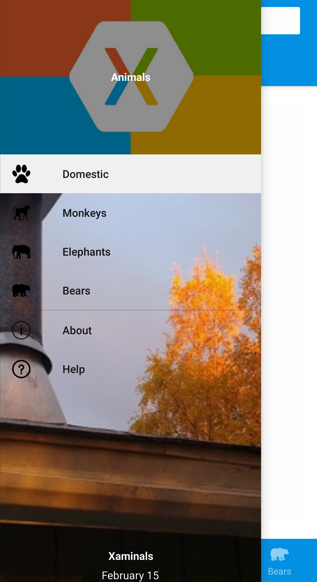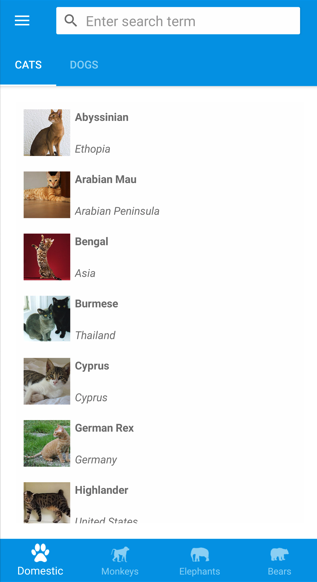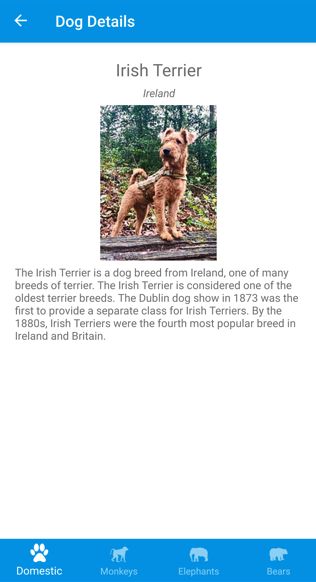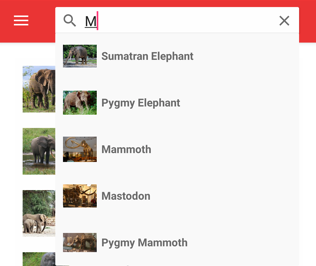.NET MAUI Shell overview
.NET Multi-platform App UI (.NET MAUI) Shell reduces the complexity of app development by providing the fundamental features that most apps require, including:
- A single place to describe the visual hierarchy of an app.
- A common navigation user experience.
- A URI-based navigation scheme that permits navigation to any page in the app.
- An integrated search handler.
App visual hierarchy
In a .NET MAUI Shell app, the visual hierarchy of the app is described in a class that subclasses the Shell class. This class can consist of three main hierarchical objects:
- FlyoutItem or TabBar. A FlyoutItem represents one or more items in the flyout, and should be used when the navigation pattern for the app requires a flyout. A TabBar represents the bottom tab bar, and should be used when the navigation pattern for the app begins with bottom tabs and doesn't require a flyout. For more information about flyout items, see .NET MAUI Shell flyout. For more information about tab bars, see .NET MAUI Shell tabs.
- Tab, which represents grouped content, navigable by bottom tabs. For more information, see .NET MAUI Shell tabs.
- ShellContent, which represents the ContentPage objects for each tab. For more information, see .NET MAUI Shell pages.
These objects don't represent any user interface, but rather the organization of the app's visual hierarchy. Shell will take these objects and produce the navigation user interface for the content.
Note
Pages are created on demand in Shell apps, in response to navigation.
For more information, see Create a .NET MAUI Shell app.
Navigation user experience
The navigation experience provided by .NET MAUI Shell is based on flyouts and tabs. The top level of navigation in a Shell app is either a flyout or a bottom tab bar, depending on the navigation requirements of the app. The following example shows an app where the top level of navigation is a flyout:

In this example, some flyout items are duplicated as tab bar items. However, there are also items that can only be accessed from the flyout. Selecting a flyout item results in the bottom tab that represents the item being selected and displayed:

Note
When the flyout isn't open the bottom tab bar can be considered to be the top level of navigation in the app.
Each tab on the tab bar displays a ContentPage. However, if a bottom tab contains more than one page, the pages are navigable by the top tab bar:

Within each tab, additional ContentPage objects that are known as detail pages, can be navigated to:

Shell uses a URI-based navigation experience that uses routes to navigate to any page in the app, without having to follow a set navigation hierarchy. In addition, it also provides the ability to navigate backwards without having to visit all of the pages on the navigation stack. For more information, see .NET MAUI Shell navigation.
Search
.NET MAUI Shell includes integrated search functionality that's provided by the SearchHandler class. Search capability can be added to a page by adding a subclassed SearchHandler object to it. This results in a search box being added at the top of the page. When data is entered into the search box, the search suggestions area is populated with data:

Then, when a result is selected from the search suggestions area, custom logic can be executed such as navigating to a detail page.
For more information, see .NET MAUI Shell search.
 Browse the sample
Browse the sample